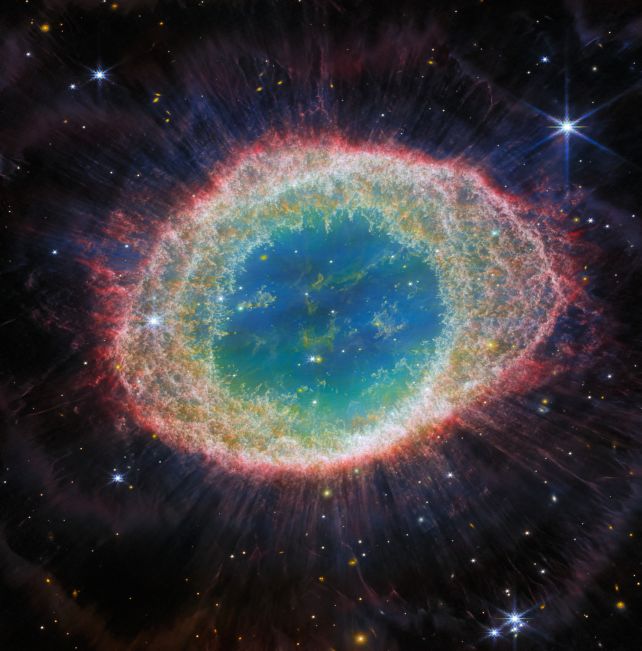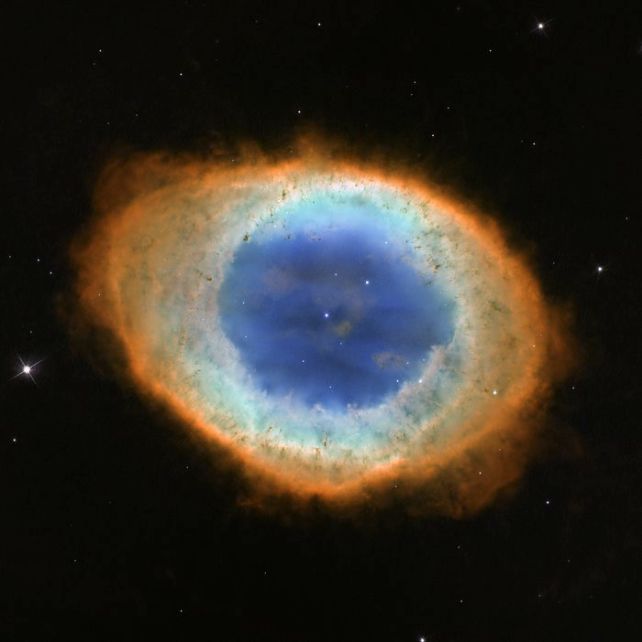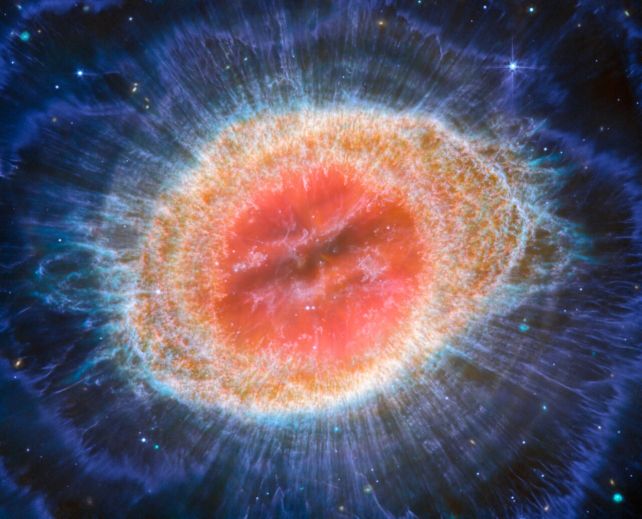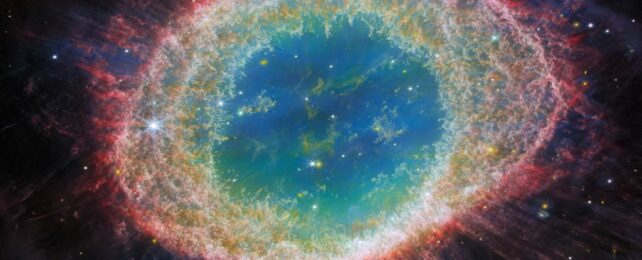The glowing debris surrounding a dying star is revealed in intricate new detail by images from the James Webb Space Telescope.
New observations of Messier 57, AKA the Ring Nebula, were unveiled earlier this month; now, cleaned, polished, and processed, the images show the dying star like you've never seen it before.
Using the near-infrared NIRCam and mid-infrared MIRI, the observations highlight different aspects of the death throes of the Sun-like star at the center of the nebula. NIRCam's observations reveal the intricacies of the filaments and knots of the nebula's inner regions, while MIRI reveals the delicate traceries of concentric features in the outer sections.

The Ring Nebula, some 2,750 light-years away, is what is known as a planetary nebula; the final stages of a star that, once upon a time, was a bit like the Sun. When Sun-like stars start running out of fuel to power the hydrogen fusion in their cores, they start becoming unstable, ejecting their outer material.
The stellar core, no longer supported by the outward pressure of fusion, collapses under gravity into a white dwarf. This is the eventual fate of the Sun and most of the stars in the Milky Way.
The Ring Nebula was created by a star that reached the end of fusion some time in the last 2,000 years (from our perspective). At its center is a white dwarf around 60 percent of the mass of the Sun; the material around this star is expanding outwards into space in a sphere that to us looks like a ring filled with glowing material.

The outer shell of the nebula is thick and dusty, carved into intricate structures where it punches into the interstellar medium. The new images reveal some 20,000 dense hydrogen-rich globules in the nebula, and the light from the main shell shows it is rich in polycyclic aromatic hydrocarbons – the type of carbon that soot is made of.
Concentric rings around the star are thought to be the product of an interaction with a binary companion. Deep within, the space glows with hot, tenuous gas.
Studying the particulars of these finer structures as revealed by the JWST will help astronomers better understand how most of the stars in the Universe are going to die.

"We are witnessing the final chapters of a star's life, a preview of the Sun's distant future so to speak, and JWST's observations have opened a new window into understanding these awe-inspiring cosmic events," astrophysicist Mike Barlow explained of University College London in the UK, and co-leader of the international JWST Ring Nebula Project.
"We can use the Ring Nebula as our laboratory to study how planetary nebulae form and evolve."
You can download wallpaper-sized versions of the new images from the ESA Webb website.
